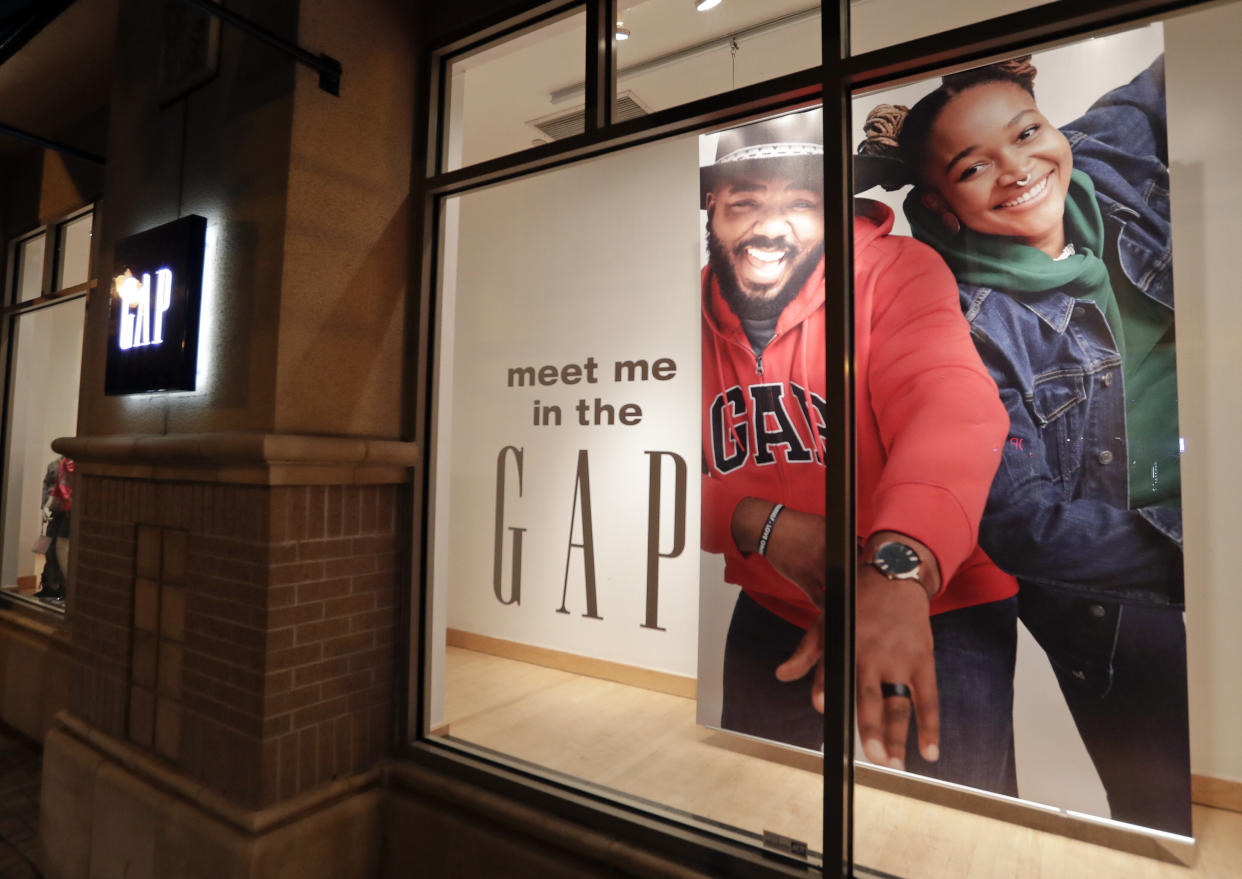The Gap may not be around 10 years from now
The Gap (GPS) brand is working on its headstone. Next up: quickly digging the six-foot hole.
After years of product miscues, weak sales and pressured margins at the hands of rising online apparel competition and mall rents, Gap management has settled on a strategy to “fix” what ills the once iconic brand. Spin off Old Navy and keep on closing underperforming Gap stores.
More on those efforts will probably be shared when Gap announces first quarter earnings Thursday.
But simply closing stores of an apparel brand that probably can no longer consistently grow sales (if at all) isn’t a long-term savior. Rather, it’s a short-term elixir designed to hopefully pump up the brand’s profit metrics and grab some investors ahead of a spin-off. An apparel company — which Gap is unless told otherwise — has to grow sales to stick around.
Straightforward equation. But one that Gap has not proven adept at for eons, which calls into question if the brand will even be around 10 years from now.
“[Shrinking to grow] is not a solution when you have weak brands that can’t drive traffic,” SW Retail Advisors President Stacey Widlitz said on Yahoo Finance’s The First Trade.
What’s on Gap’s plate
If higher tariffs on clothing was the only thing Gap had to worry about.
Gap’s global same-store sales tanked 5% in 2018, continuing a stretch of annual declines. The 5% same-store sales drop was worse than the 1% decline seen in 2017. On the heels of another disappointing holiday season, Gap said in late February it would shutter 230 Gap brand stores. Gap has closed hundreds of stores globally over the past five years, yet the brand scarcity that has created in markets hasn’t translated to improved sales.
In effect, the closings have pushed the brand further back in the recesses of shopper’s minds. Shoppers now go into a mall, reminisce about the Gap as they walk by a former location, and buy clothing at H&M, American Eagle or any of the remaining department stores.
To try and unlock value, Gap added in late February it would split up into two public companies by sometime in 2020. Old Navy will be spun off into its own public company.
Old Navy runs more than 1,100 stores in North America (its largest market) and Asia. The brand hauled in $7.8 billion in sales last year, up from $7.3 billion in 2017.
Meanwhile, the remaining businesses named NewCo — Gap, Intermix, Athleta, Banana Republic — will live as its own separate entity. According to a slide deck from Gap, these brands raked in $8.7 billion in sales last year.
But it will likely be hard to drum up interest in NewCo in large part because of the ongoing decay of the Gap brand. Nonetheless, Gap CEO Art Peck, who will lead NewCo post spin-off, still thinks the Gap brand has potential.

“Our market research strongly supports the view that Gap remains a relevant brand with strong emotional equities. As challenging as 2018 was, logo sales which to me are an indication of the equity of the brand were up 11% globally. To me this is a clear sign that the relevance of the brand and even more importantly the strong emotional connection with and pride in the brand like Gap,” Peck told analysts on a February 28 conference call.
Strong sales of shirts with logos on them, a sign of brand health? Huh? What about the lack of interest — for years — in what Gap is selling in the other 95% of its stores’ floor?
“It's clear the potential for future growth and penetration is there. We just need to give our customers the quality, fit and style they want. And to address those issues, we've been focusing on improving the product engine of the business on three fronts: Process improvement as you know we are adopting best practices from across the company, while driving a culture of continuous improvement; talent and structure, super important and critical to me,” Peck added. “The numbers for Gap suggest the complete opposite.”
Right. Apparently the analyst team at Goldman Sachs is skeptical, too, of the outlook for a post spin-off Gap. The Goldman team responsible for Gap coverage maintained their Sell rating on the stock after meeting with Peck and Gap Chief Financial Officer Teri List-Stoll in mid-April.
Outlook for Gap
The Gap brand is on a long-term road to irrelevance. The fact Gap’s stock is down 15% this year despite the spin-off news likely reflects investor unease about the long-term outlook for the namesake brand across distribution channels (online and malls).
Sad stuff, but the numbers as they so often do tell the entire story. More on that later this week.
Brian Sozzi is an editor-at-large and co-host of ‘The First Trade’ at Yahoo Finance. Follow Brian Sozzi him on Twitter @BrianSozzi
Read the latest financial and business news from Yahoo Finance
Apple stock could jump by as much as 530%, despite Trump's trade war on China
Uber's stock may be in reverse, some think it may have bottomed
Follow Yahoo Finance on Twitter, Facebook, Instagram, Flipboard, SmartNews, LinkedIn, YouTube, and reddit.
